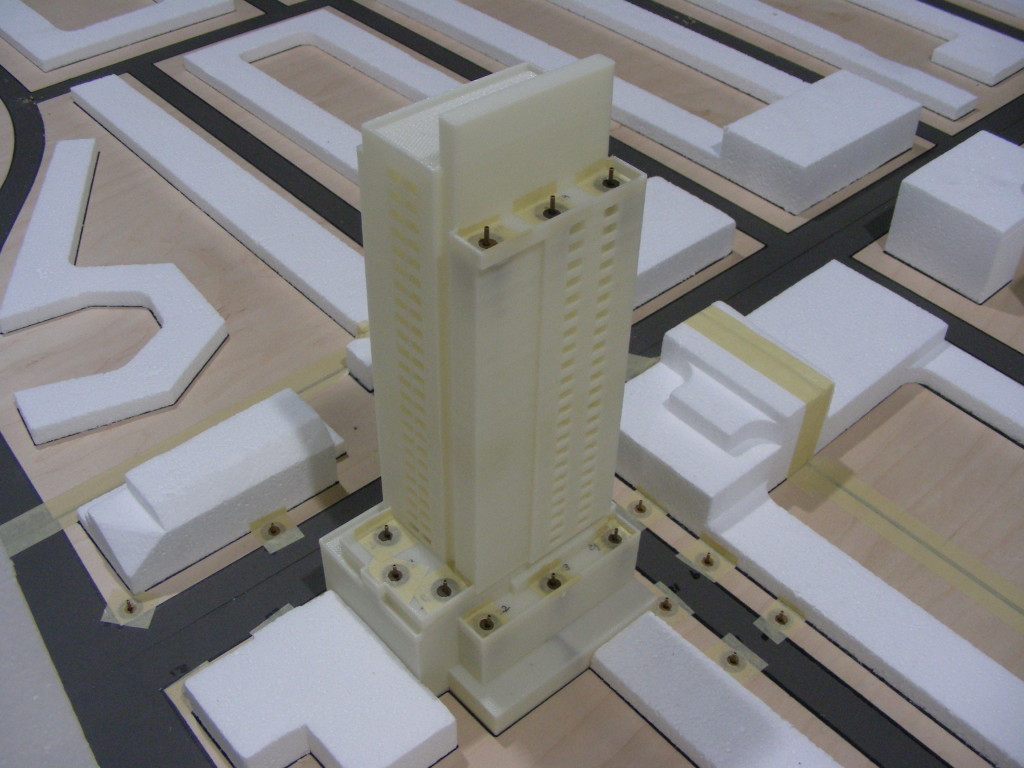A pedestrian wind study assesses the level of comfort and degree of safety around the base of buildings or over on elevated terraces. Depending on the size and massing complexity of a project, qualitative or quantitative studies are typically performed during rezoning and site plan approval stages. In other circumstances, problematic pedestrian wind conditions that have been discovered post-construction can be replicated and analyzed to propose effective mitigation.
Qualitative studies are based on our professional experience with wind flow patterns around buildings and in-depth analyses of local climate data. We investigate the massing of a proposed development by analyzing the prominent directions and interpret how wind flows are modified by the presence of the building. Preliminary recommendations for mitigation are provided for windy areas. This type of study is appropriate for re-zoning of large projects and for site plan approval of smaller building projects of up to approximately 10 storeys.
Quantitative studies are performed in a wind tunnel or with the aid of Computational Fluid Dynamics (CFD). These studies are performed on a scaled physical or digital model of the study site and its surroundings. Gradient Wind typically uses a scale range between 1:300 and 1:400. Measurements are performed at a number of sensor locations on the model, selected to represent important pedestrian areas, and cover winds approaching the site from the entire 360° azimuth.
The general approach to wind tunnel and CFD modelling is to provide building and topographic detail in the immediate vicinity of the study site using a context model, and to employ general roughness elements over a length of wind tunnel to replicate the full scale wind characteristics over the surrounding terrain. Sensors record local wind velocities at a full scale equivalent height of 1.5 metres and, combined with local climate data, produce pedestrian wind comfort predictions on an annual and seasonal basis.
Comfort predictions are compared against industry guidelines. When required, we can explore wind mitigation strategies with the design team to ensure a safe and comfortable environment for pedestrians.

